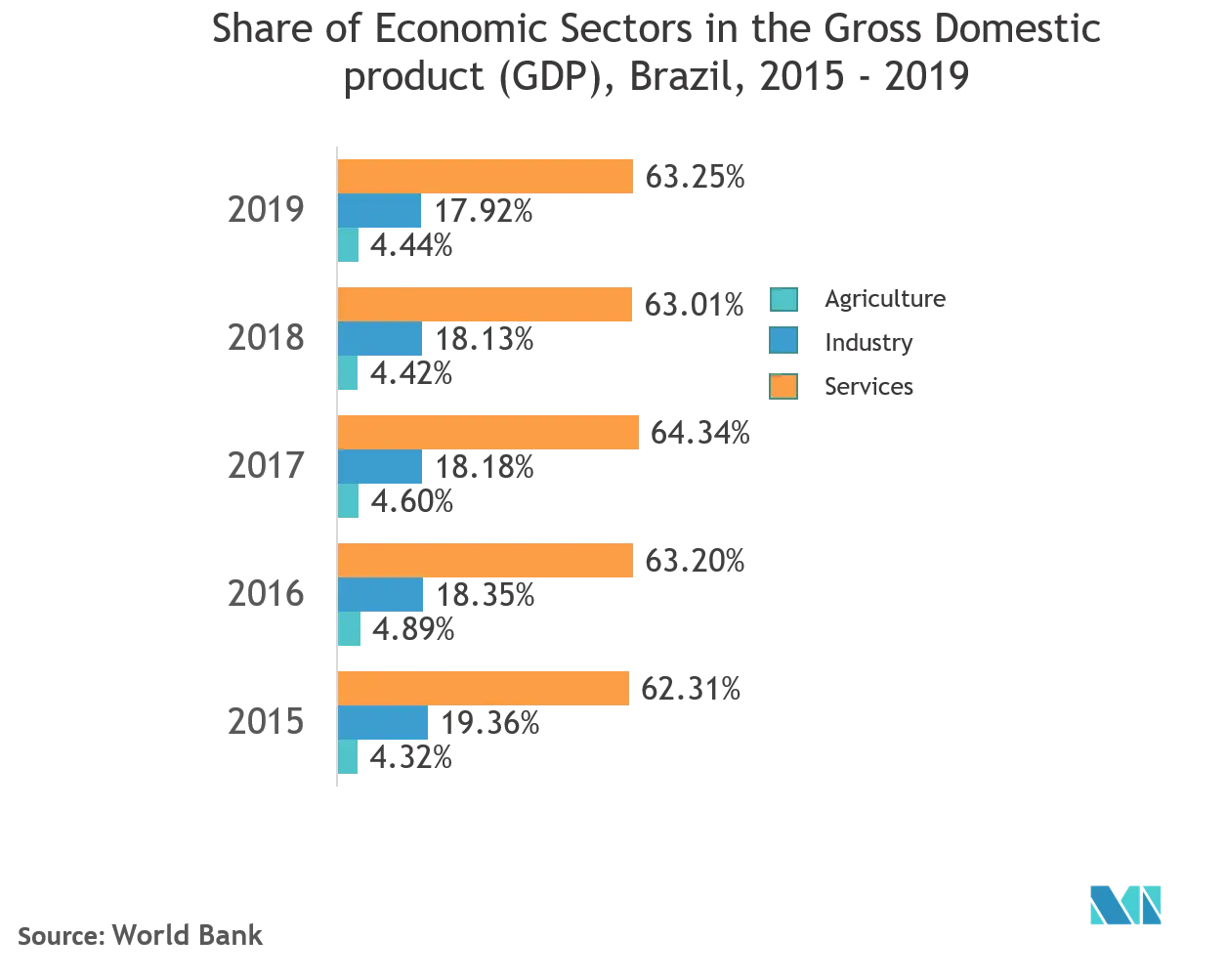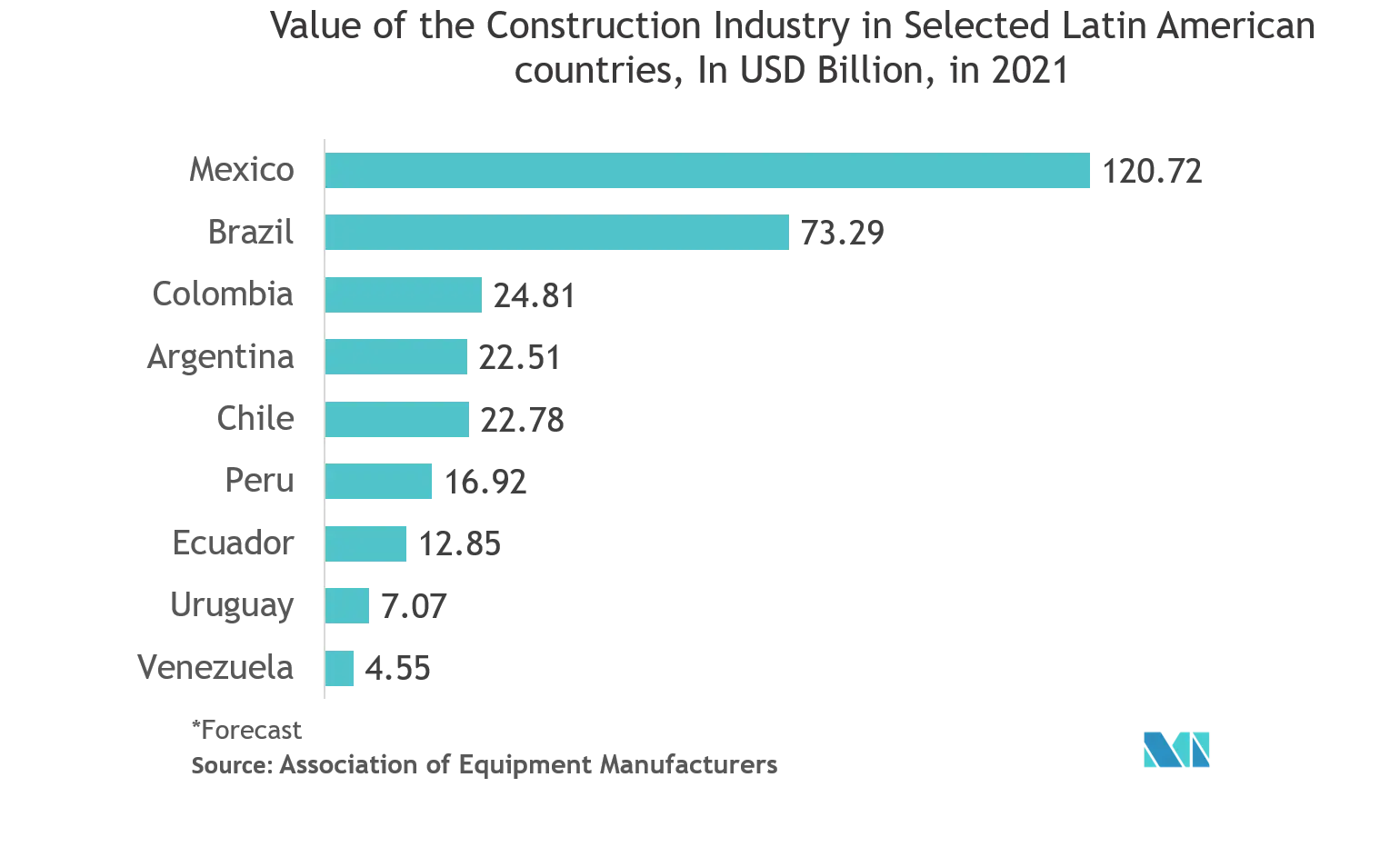Market Trends of Latin America Proximity Sensors Industry
This section covers the major market trends shaping the Latin America Proximity Sensors Market according to our research experts:
Inductive Proximity Sensors are Expected to Witness Significant Growth
- Currently, the usage of inductive proximity sensors is the highest, because of their presence in industrial applications, such as metal detectors, traffic lights, car washes, and other automated industrial processes.
- Latin America is anticipated to experience an improved demand for inductive proximity sensors, owing to the presence of the growing industrial sector in the region. Moreover, the region has Mexico, whose economy has performed well in recent years, mostly because of its thriving manufacturing sector. However, the performance of the manufacturing sector, especially in high-end manufacturing, will be a crucial driver for Mexico's economic growth this year and beyond. Key manufacturers in the inductive proximity sensors market include Honeywell, OMRON, Panasonic, Pepperl+Fuchs, Rockwell Automation, Truck Inc., IFM Electronic, Fargo Controls, Broadcom, and Eaton.
- The stabilizing economy of the United States is also supporting this growth, as the country accounts for 70% of the automobile exports from Mexico. The country shares borders with the United States, which has helped its industries through NAFTA, with which, it has virtually zero-market access barriers for US exports. The high automobile manufacturing rate in the region demands automated manufacturing solutions, which is providing opportunities for the growth of the market.
- The lower labor costs in the region are resulting in rapid expansion of other industrial sectors, like the consumer electronics manufacturing, pharmaceutical manufacturing, and metallurgical industry. Furthermore, the growing shift toward the industry 4.0 by these industries is contributing to the adoption of the market studied.

Brazil is Expected to Witness Significant Growth
- Improved efficiency and reduction in production costs, when compared to the conventional manufacturing process, is boosting the growth of industrial automation. At manufacturing sites, unforeseen facility stoppages are a major management issue directly linked to lost production opportunities. Thus, manufacturers are looking for ways to utilize smart devices and IoT to maintain and improve facility operation rates without relying on human experience or skills.
- Brazil is one of the most important markets for manufacturing in the region. It dominates the surrounding regions economically and commercially. Its manufacturing sector ranks as the third biggest in the American region.
- The automotive sector in Brazil is leading the deployment of robotics as a part of digital transformation. Volkswagen Brazil, for instance, announced a digital transformation plan to transform client and staff experience, using automation and artificial intelligence as critical pillars. The company aims to increase efficiency by 15% to 20% efficiency with the new layouts of logistics and production. This is expected to increase the demand of proximity sensors in the industry
- Investments by foreign majors are augmenting the Industry 4.0 initiative in the country. Brazil has also launched a new low-cost smart city project. Smart City Natal is a construction by Planet Smart City, a smart, affordable housing company, which has integrated digital, architectural, social, and environmental innovation. It is the company’s second Smart City in the world, which is a 170-hectare extension that plans to home around 150,000 people. Planet Smart City developed the project in partnership with Habitat, a company that specializes in city planning, and invested around EUR 27 million.
- Capacitive proximity sensors are used detect metallic or non-metallic objects, such as wood, cardboard, ceramic, glass, plastic, aluminum, laminates or pellets, mineral powders like talcum, cement, clay, etc. and as the construction industry grows, the demand for proximity sensors are expected to witness a growth.

